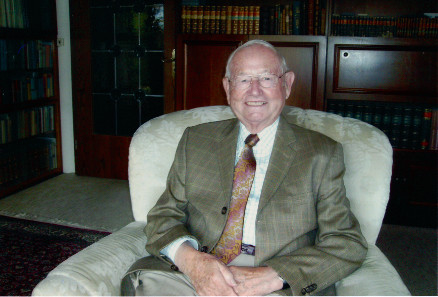[bsa_pro_ad_space id=4]
by Ursula Kampmann
translated by Annika Backe
December 10, 2015 – There are only a few who are so closely connected with a sub-discipline of numismatics as Albert Pick. Up to the present day, paper money collectors throughout the world state the Pick numbers to make sure that are properly understood when referring to a specific bank note. In doing this, they honor this pioneer and collector who has not only written books on the subject of collecting but assembled one of the most important collections of paper money himself.
Born on May 15, 1922, in Cologne, Albert Pick is said to have been only eight years old when he started collecting paper money. In 1930, he got two emergency bank notes for one pfennig. That was a small amount of capital well-invested. As an interest, it brought him a lifelong interest in history and far away countries. First, however, he shared the fate of many Germans. From the school desk he was sent to the front, and became a prisoner of war after WWII. Albert Pick lived in the United States of America for one year where he acquired his outstanding English skills for which he was often praised by his American friends.
Albert Pick.
After returning, Albert Pick studied German studies, philosophy, and history. Until 1964, he headed the Kölner Universitätsverlag as managing director. And during that time he collected. He collected to an extent that it is hard to imagine nowadays, and that was more or less due to the fact that the collecting area he was interested in, bank notes, had not even come into existence at that time.
180,000 bank notes were assembled by Albert Pick: a huge collection that far exceeded the means of one individual in terms of storage, documentation and conservation. For this reason, he gave the assemblage to the Bavarian Mortgages and Exchange Bank in 1964. At the same time, the bank appointed him curator of his own collection, thus providing Pick with the opportunity to continue purchasing. 300,000 bank notes currently form part of the collection which, in 2003, was incorporated into the HBV Stiftung Geldscheinsammlung which closely collaborates with the Staatliche Münzsammlung München.
In addition to his duties as a curator, Albert Pick made use of the vast amount of material available to him. Accessing it, he wrote many seminal books on the subject of paper money. Published in 1964, his ground-breaking book “Papiergeld” (Paper Money) provided the first historical overview of this specialist field. In 1970, his paper money catalog “Europa seit 1900” (Europe since 1900) was released.
Indeed pioneering was Pick’s decision the following year, to have this work translated into English. That made both his person and his book internationally known. Published in 1975, his “Standard Catalog of World Paper Money” was the hour of birth of the Pick number system which is used down to the present day.
Right from the start, Albert Pick focused on internationality. That is why he belongs to the few German numismatists which are widely known with American collectors as well. The young soldier of the past, who used to fight on behalf of a criminal regime, seized the opportunity to embark on a peaceful mission and build a bridge between German and American collectors.
On November 22, 2015, Albert Pick died in a nursing home at the age of 93. With him, we lose a numismatic legend.





